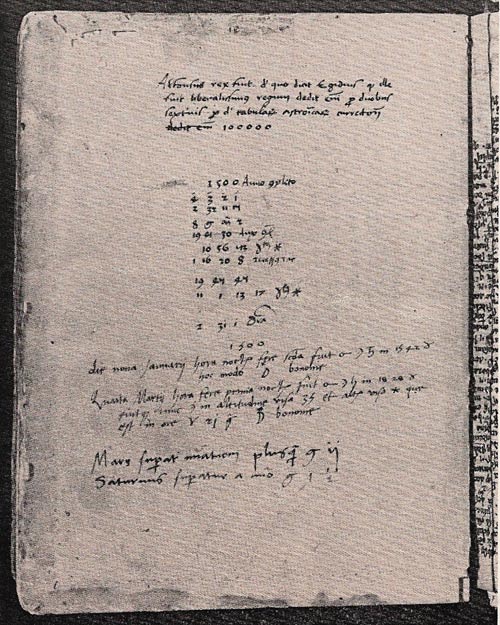Alphonsine tables

The last leaf of Copernicus' copy of the Alphonsine tables for computing the planetary positions contains a cryptic note by Copernicus in his own handwriting. The note, the last two lines on the page, states that Mars was ahead of its predicted position by more than two degrees and that Saturn was behind its predicted position by 1½ degrees. If the absence of a remark about Jupiter indicates that its predictions had no appreciable error, then the only time that all of these conditions were fulfilled was during the conjunctions of the planets in February and March of 1504. Thus these two undated lines become convincing evidence that Copernicus did in fact observe the conjunctions in 1504.
The Alphonsine tables is a set of tables giving the positions of the Sun, Moon, and planets, published in 1252 under the patronage of Alfonso X (1223?–1284), King of León and Castile, who had assembled, at Toledo, many of the world's leading astronomers. The tables were calculated by a team of astronomers using the principles set out by Ptolemy in the Almagest but incorporating more recent observations. They remained the standard in Europe for nearly 400 years, until superceded by the work of Johannes Kepler.


